Protective hairstyles can save you the time spent on maintenance, but they may be a little harsh on the roots sometimes. If you’re looking for trendy and comfortable hairdos, you can try crochet styles as low-tension and lightweight alternatives. They’re elegant, sophisticated, and easy to install.
Crochet braids have been around for a while, but recently they’ve gotten trendier. There’s a wide range of crochet styles you can choose from – knotless braids, halo braids, flat twists, Bantu knots, and more.
It’s important to know how to maintain crochet braids for a long-lasting look. Proper knowledge about the installation process and the right extensions can ensure sleek crochet braids!
Understanding Low-tension Protective Hairstyles
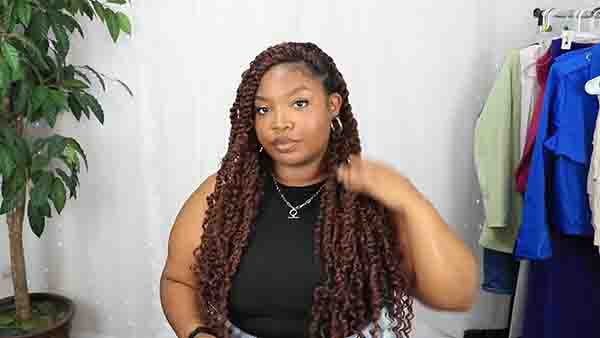
Protective hairstyles can keep your natural hair safe from the humid weather and excessive tugging. But some of these hairstyles, such as box braids, can put too much strain on the hair roots sometimes.
To take care of your hair, you must understand its type and texture. You should also know how much stress your roots can handle. Low-tension protective styles are easy on your hair and keep the scalp healthy!
Some of the most popular low-tension protective styles include faux high pony, flat twists, half up – half down, etc. You are free to explore and find your favorite lightweight protective hairstyle!
The Risks of Tension-based Protective Hairstyles on the Scalp
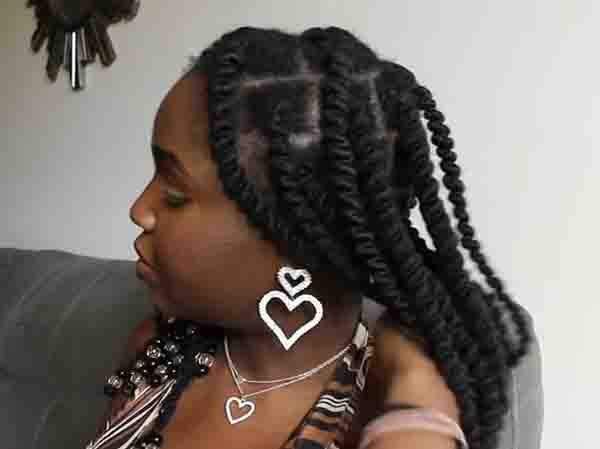
Protective hairstyles can often damage your hair if you don’t keep an eye out, especially when the style is tension-based.
1. Tension on the Roots
Many protective styles like box braids and Marley twists can cause immense strain on your roots. This tension can damage the follicles and make the hair strands rip out. It may also lead to thinning or traction alopecia.
2. Dry Strands
If you wear tension-based protective styles for a long time, your hair mightn’t receive ample moisturizing. This can make your hair overly dry and cause breakage.
3. Friction and Breakage
The extensions used in your protective style can create too much friction and increase hair breakage in the end. Tension-based styles are more at risk for friction during installation, maintenance, and de-installing.
4. Excessive Shedding
Even though your hair sheds a certain amount naturally, the tension of protective styling can add to it. Too much pressure is always bad for your hair’s health.
Signs of Scalp Damage from Tension-based Protective Styles and Consequences
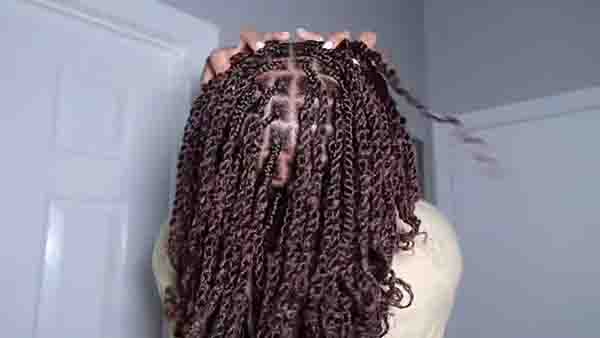
Tension-based protective hairstyles can cause scalp damage which may have severe consequences in the long run. Make sure to always look out for the signs –
1. Burning Sensation
If the braids are too tight and closely tied to the scalp, you might feel a burning pain because of the sensation. Besides, synthetic braids are coated in an alkaline base, which sometimes may irritate your skin.
2. Feeling the Weight of Hair
You know that you’re facing scalp damage when you start feeling the extra weight of the hair. This pressure can cause breakage and traction, resulting in folliculitis. Try doing knotless braids for a more lightweight style!
3. Hair Loss or Thinning
With age, our follicles tend to shrink, but tension-based hairstyles can make it worse and cause hair loss. Crochet braids can help to evenly distribute the pressure and protect your scalp!
Who Can Wear Low-Tension Protective Styles?
Depending on the texture and type of your hair, you can pick an appropriate low-tension protective style. These hairstyles are most popular among Black people, but anyone can wear them to protect their hair!
Why are Crochet Locs Considered a Low-tension Protective Style?

Crochet locs are a technique for adding extensions to your natural hair. However, instead of sewing them in, the strands are looped under cornrows with a latch hook and secured with or without knots. This method gives your scalp more room to breathe and ensures healthy hair!
These locs don’t put too much strain on your scalp and give you an elegant appearance. Crochet locs are considered a low-tension protective style because they’re gentle on your hair but keep it safe from damage at the same time.
Comparison of Crochet Styles with Other Protective Styles in Terms of Tension
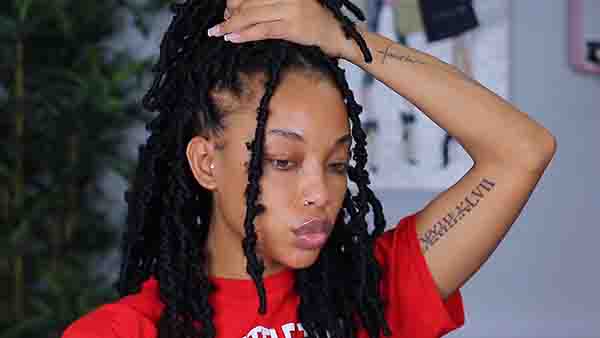
Compared to box braids, twists, and other protective hairstyles – crochet hairstyles are easy to and fast to install. Besides, they can last from 4-8 weeks and are often less expensive than other styles.
You can use synthetic hair to make the braids which reduce the tension on your scalp. This hairstyle is lightweight and versatile – you can customize the braiding technique and feel comfortable at the same time!
The Low-tension Installment Process of Crochet Locs
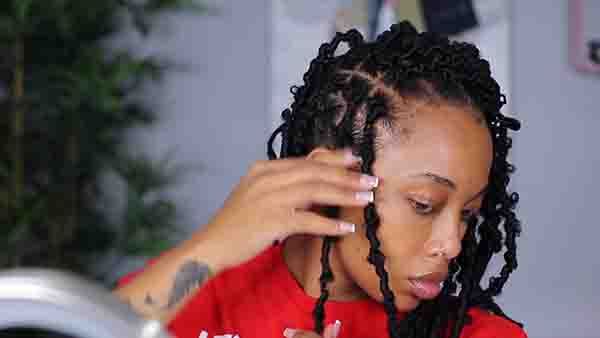
Crochet locs are easy to install and you can do it at home by following these steps –
- Clean and Moisturize your hair before installing the braids.
- Cornrow your hair till the back and start crocheting using a bobby pin or beader.
- Slide the needle under the cornrow, hook the hair, and close the latch.
- Pull the needle until the cornrow forms a hoop and put the end through it.
- Repeat the process until all of the hair is crocheted!
This hairstyle will put less pressure on both your scalp and hair, so you won’t have to worry about any damage!
How to Choose the Right Hair Extensions for Low-Tension Crochet Styles
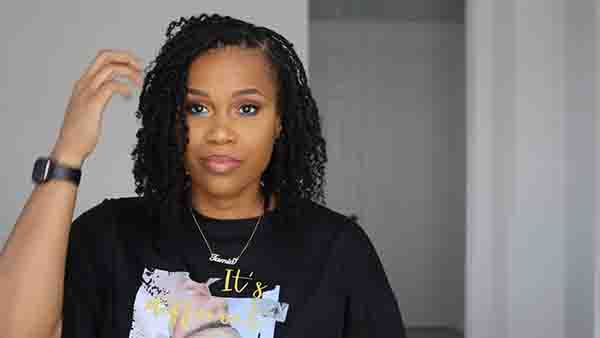
To achieve the perfect crochet style, you need to know what hair extensions to incorporate. If you want to speed up the braiding process, you can use pre-braided hair instead of free-flowing extensions. These extensions also work well with box braids.
For Crochet Faux Hawk, you can use curly hair extensions to loop through the center of each ponytail. Senegalese twists are installed with straight hair extensions. Whereas, passion twists require pre-twisted extensions.
Thus, depending on your desired hairstyle, the type of extension differs. Switch the extensions up for a unique hairstyle!
How to Maintain Low-tension Crochet Styles for Long-lasting Protection
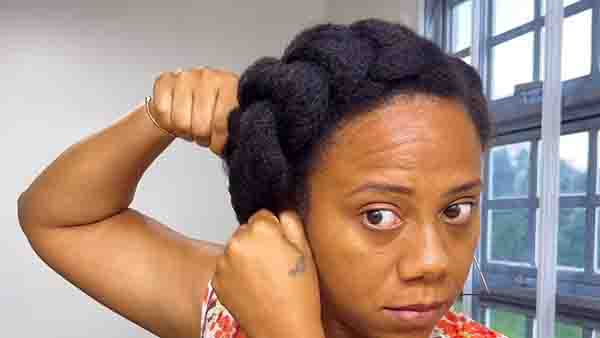
Always consider how long you’re keeping the protective style in when styling your hair. If you keep a protective hairstyle on for too long, it may damage your hair. Here’s how you can care for low-tension crochet styles –
a. Proper Cleanliness
Whether your faux locs are produced from real or synthetic hair, you should make sure they are well-cleaned along with your natural hair. You should never go more than a month without cleansing your scalp and hair.
b. Moisturizing
It’s crucial to hydrate your hair in between wash days so that it stays healthy when in locs. To prevent exposed hair from drying and falling out, make sure it receives enough moisture and hydration.
You can use a leave-in conditioner or moisturizer. Never forget to hydrate your extensions if they’re made of human hair.
c. Preserving the Locs
With hair growth, your crochet style may become frizzy. Make sure to re-twist the locs when needed. You can also cover your hair with silk cloth at night to reduce friction and tension on the scalp.
Techniques for Gentle Handling and Combing in Low Manipulation Hairstyles
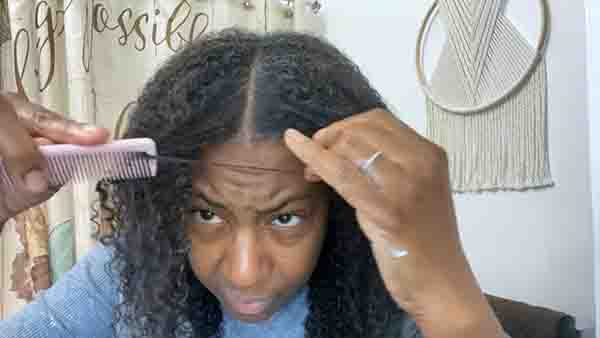
Low manipulation style refers to any technique that reduces the risk of hair damage. There are a few ways you can handle and comb these hairstyles for better maintenance –
1. Wide Tooth Combs
To minimize damage, avoid combs with small teeth and sharp ridges. Make sure your hair is hydrated before combing through it.
2. Gentle Shampooing
Use mildly warm water and low pressure while washing your crochet hairstyle.
3. Deep Conditioning
Hydrolyzed protein and sealing ingredients work the best to lock moisture in your hair for healthy growth. Using the right conditioner will make your hair easier to handle and comb through.
How Long Can I Keep a Low-tension Protective Style in My Hair?
You shouldn’t keep your low-tension protective style on for more than 6-8 weeks. If you see any signs of hair damage, make sure to take steps immediately.
Wash the locs every 2-4 weeks and moisturize when needed. Even protective and low-tension styles need proper maintenance for a long-lasting look!
What Braids Have the Least Tension?
Tension-based protective hairstyles can do your hair more harm than good. So, it’s always a better decision to go for low-tension styles –
1. Faux High Pony
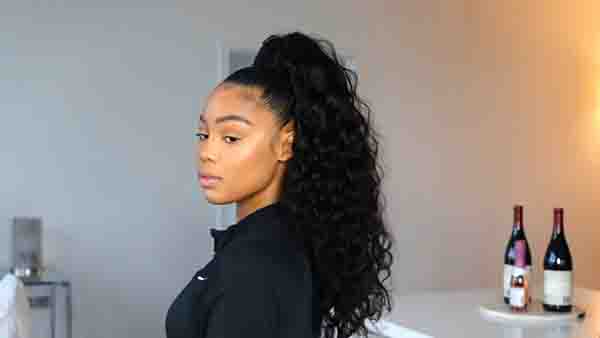
This is a popular hairstyle that is done by wrapping hair around the top of your head for a sleek look. It’s perfect for women with long hair. Adjust the tightness of your ponytail to reduce tension on the scalp.
Make sure that you’re using the right extensions and hair bands for the high pony to ensure a low-tension hairstyle.
2. Knotless Braids
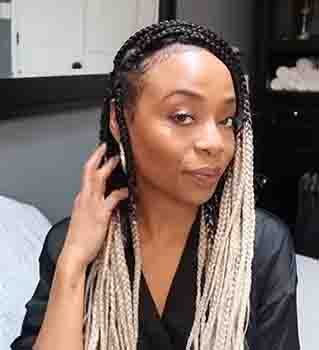
These are similar to box braids but without knots. You can start the braiding from natural strands and add extensions as you go for the desired thickness and volume. It’s a flexible hairstyle that you can customize in many ways!
3. Half Up Half Down
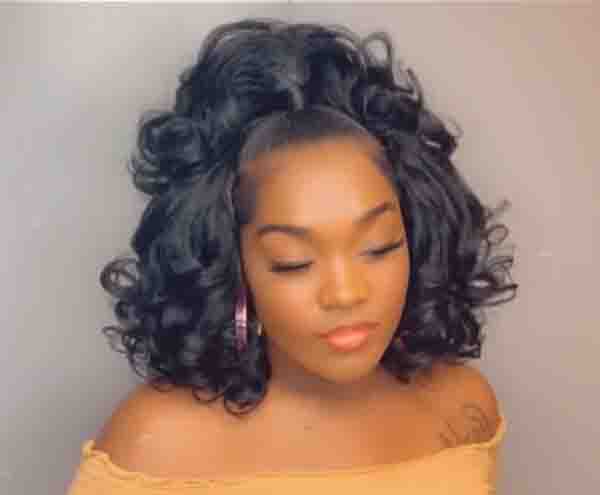
In this hairstyle, you have to crochet half of your hair into a loose bun and the other half stays down – giving you a low-tension and elegant look! The loose bun prevents scalp discomfort and excessive tension.
4. Halo Braid
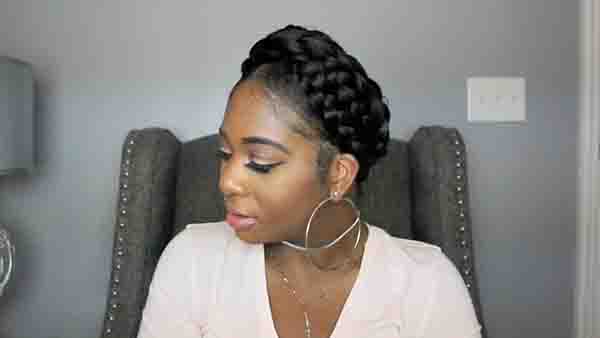
This is a beautiful plaited hairstyle where a cornrow-style braid or a long Dutch braid wraps around your head. You can use hair extensions to make it low-tension and give the style more volume.
5. Braid Out
You can wear your braid-outs in a variety of styles, such as buns, low and high puffs, and half-up, half-down looks. Make sure not to keep this hairstyle on for more than 4-6 weeks to avoid breakage.
6. Flat Twists
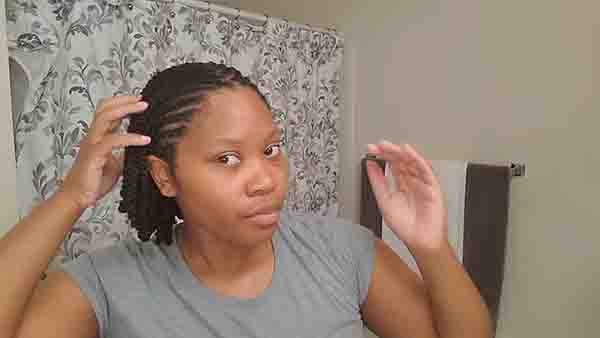
Flat twists can be low-tension if you make sure not to braid them too close to your scalp. You can create your design by adjusting the twists however you want.
This hairstyle is suitable for most hair types and textures. You can incorporate the twists in many different styles!
7. Bantu Knots
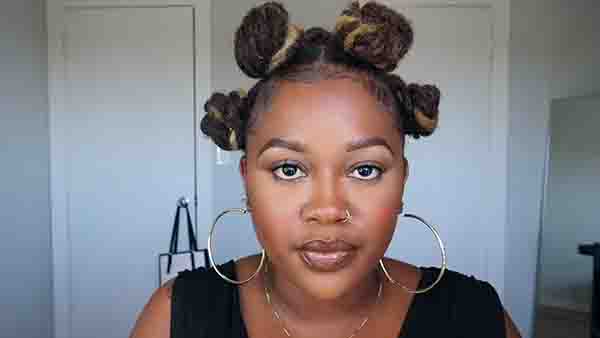
This style is created by sectioning, twisting, and wrapping the strands of your hair until it forms a spiral knot. Avoid putting too much pressure to keep it low-tension and lightweight.
FAQ
Buns or updos with loose twists.
Two-strand twists or braids.
Bantu knots, flat twists, or crochet braids.
Wigs or crochet braids with a lightweight base.
Yes, braids are considered a low manipulation style.
No, ponytails can create tension on the hairline.
Both styles can last a similar amount of time if cared for properly.
Yes, knotless braids are typically considered low tension.
Kanekalon or toyokalon hair are often well-tolerated.
Ensure your braids are not too tight and avoid excessive pulling or stretching.
Yes, you can braid your hair without relaxing it.
Loose two-strand twists or large braids are more comfortable for sleeping.
Cornrows can be low tension if not braided too tightly.
Cornrows can be high tension if braided tightly.
Styles that involve excessive pulling, such as tight ponytails or harsh chemical treatments, can be damaging.
Low manipulation styles like loose buns or two-strand twists can help minimize breakage.
A low ponytail can be a protective style if it is loose and not pulled tightly.
When installed properly and not overly tight, knotless braids should not damage your hairline.
Avoid tight braiding, minimize tension, and take breaks between installations.
Knotless braids can last for several weeks, depending on how well they are cared for.
Low porosity hair has difficulty absorbing moisture, making it more challenging to keep hydrated.
Hair health is not solely determined by porosity. It depends on overall care and maintenance.
Low porosity hair can be prone to product buildup and may require more time and effort to moisturize.
Neither porosity is inherently worse. They have different care requirements.
Hair health is subjective and varies from person to person, regardless of porosity.
Low porosity hair can be more prone to dryness and breakage if not properly moisturized.
Use lightweight, water-based moisturizers and apply them more frequently.
Relaxing low porosity hair is possible, but it requires careful consideration and professional expertise.
The Bottom Line
Protective hairstyles are an important fashion statement and an integral part of many cultures. If you have sensitive hair, crochet styles such as low-tension and lightweight alternatives can be the best choice for you!
Crochet styles are popular for their low-tension and stress-free nature. You can comfortably wear these styles to any event without worrying about excessive damage or breakage. With appropriate care and maintenance, these styles can last for a while!

